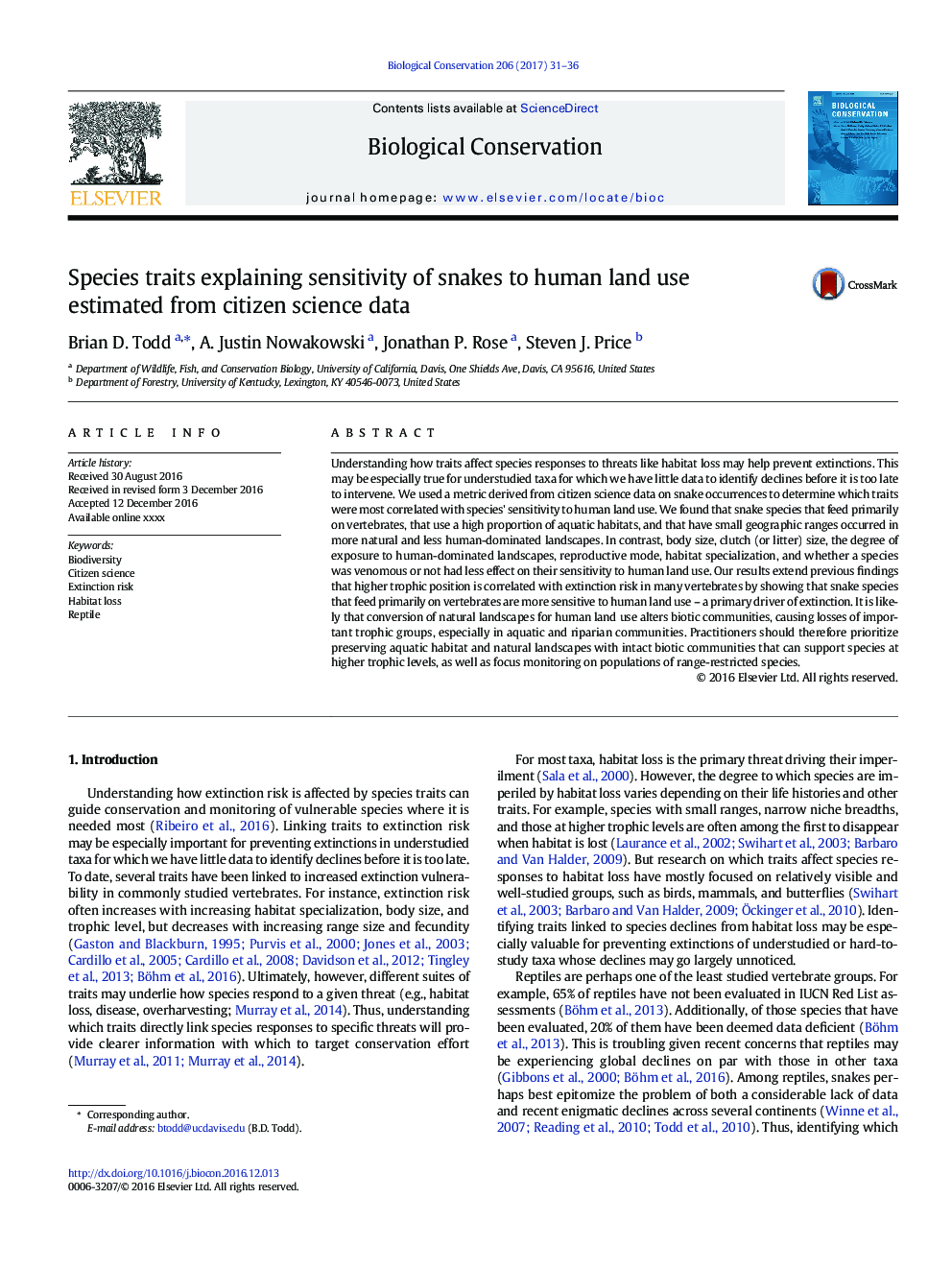| کد مقاله | کد نشریه | سال انتشار | مقاله انگلیسی | نسخه تمام متن |
|---|---|---|---|---|
| 5743268 | 1617896 | 2017 | 6 صفحه PDF | دانلود رایگان |
عنوان انگلیسی مقاله ISI
Species traits explaining sensitivity of snakes to human land use estimated from citizen science data
ترجمه فارسی عنوان
ویژگی های گونه های توضیح حساسیت مار به استفاده از زمین های انسانی از داده های علمی شهروندان برآورد شده است
دانلود مقاله + سفارش ترجمه
دانلود مقاله ISI انگلیسی
رایگان برای ایرانیان
کلمات کلیدی
تنوع زیستی، علم شهروند خطر انقراض، نابودی زیستگاه، خزنده
موضوعات مرتبط
علوم زیستی و بیوفناوری
علوم کشاورزی و بیولوژیک
بوم شناسی، تکامل، رفتار و سامانه شناسی
چکیده انگلیسی
Understanding how traits affect species responses to threats like habitat loss may help prevent extinctions. This may be especially true for understudied taxa for which we have little data to identify declines before it is too late to intervene. We used a metric derived from citizen science data on snake occurrences to determine which traits were most correlated with species' sensitivity to human land use. We found that snake species that feed primarily on vertebrates, that use a high proportion of aquatic habitats, and that have small geographic ranges occurred in more natural and less human-dominated landscapes. In contrast, body size, clutch (or litter) size, the degree of exposure to human-dominated landscapes, reproductive mode, habitat specialization, and whether a species was venomous or not had less effect on their sensitivity to human land use. Our results extend previous findings that higher trophic position is correlated with extinction risk in many vertebrates by showing that snake species that feed primarily on vertebrates are more sensitive to human land use - a primary driver of extinction. It is likely that conversion of natural landscapes for human land use alters biotic communities, causing losses of important trophic groups, especially in aquatic and riparian communities. Practitioners should therefore prioritize preserving aquatic habitat and natural landscapes with intact biotic communities that can support species at higher trophic levels, as well as focus monitoring on populations of range-restricted species.
ناشر
Database: Elsevier - ScienceDirect (ساینس دایرکت)
Journal: Biological Conservation - Volume 206, February 2017, Pages 31-36
Journal: Biological Conservation - Volume 206, February 2017, Pages 31-36
نویسندگان
Brian D. Todd, A. Justin Nowakowski, Jonathan P. Rose, Steven J. Price,
